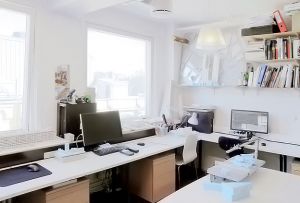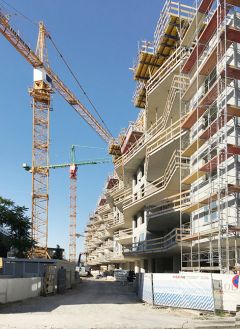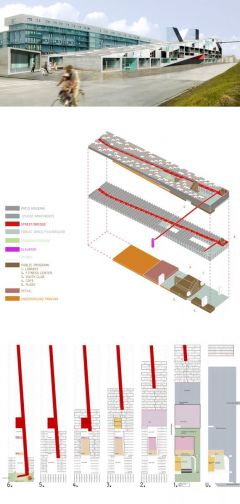
MALARCHITECTURE
SUBURBAN BLOCK
LASTENSTRASSE - MALAHOF
Sinisa Lecic
Bendik Aursand
Minna Riska
Nora Aursand Iversen
architect Peter Scheufler
Knoll Planung & Beratung with
landscape architect Thomas Knoll
Schreiner, Kastler Büro für Kommunikation
with architect Gerhard Kastler




The implementation proposal consists of 100% housing and no bridge. This programmatic constraint has ruled out the original idea of vertical layering. The competition proposal is remodelled: the idea of horizontal layering is introduced with different housing types juxtaposed (strips + carpet) whilst the original articulation from the competition proposal is maintained (promenade as a spatial organizer, system of public/semi-public spaces, housing mix/social mix, and architecture with a strong character).
The megastucture raises two issues: first, political acceptance by the municipality of an XL-scale housing project; second, the need to keep the promise of the megastructure, its programmatic richness. With ‘Red Vienna’, dealing with the XL-scale was no problem. It was much more difficult to fulfil the promise of a mix of uses. In the end, the critical minimum mix was achieved with maximum effort. This is a warning message: ‘mixing’ will always be the most difficult of our shared tasks.


Liesing is a fragment in the suburban wasteland currently undergoing rehabilitation. The public aim is to improve the physical conditions where that public may exist and interact within the framework of approved sustainable values.
The site is exposed to a high degree of noise as well as being captured in a tunnel-like condition: five levels of shipping containers on one side and a 260 metre-long “Unité” block on the other, with no sign of change in the near future. How to create an architecture that enhances the values of the public and at the same time allows an individual to thrive within his own sphere?
The proposal offers a condensed urban condition through the execution of a single architectural gesture - a megastructure fully capable of absorbing programmatic and contextual demands. The bridge ramp itself is the urban negotiator. Absorbing the topographical difference of the site, 17 metres needed for bridging the rail yard, the proposal also creates specific situations within the site: a vertical city block and a horizontal landscape with patio housing. The superimposition of these two creates potentials for public and commercial programmes – branch library, retail space, fitness centre, youth club and local café.